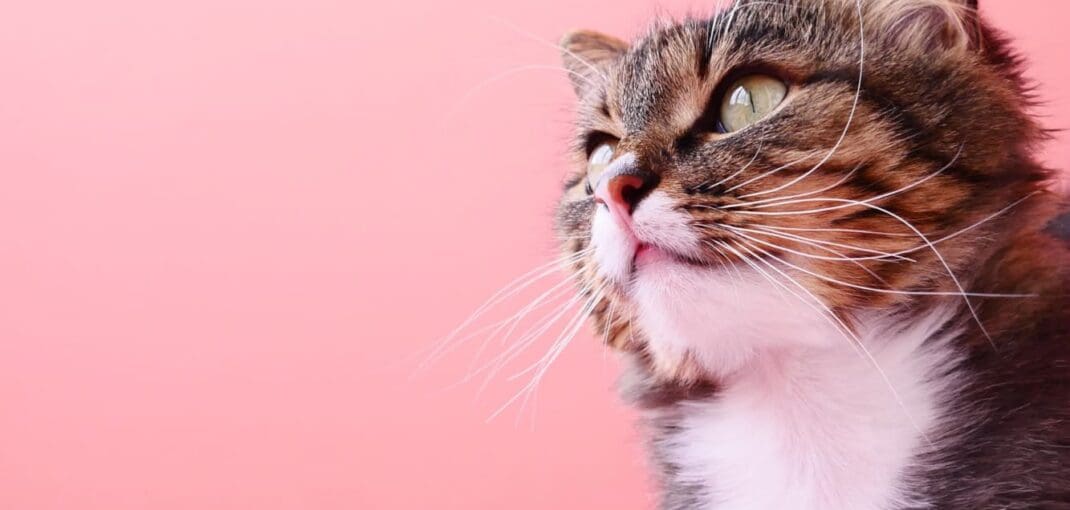Stress, which is the body’s reaction to various stimuli and results in extreme emotions, affects many people. As it turns out, it affects not only us but also our pets. However, in the case of cats, it is an extremely multidimensional phenomenon.
Why is a cat stressed?
Stress occurs in life in a great many cases and is related to various situations. We can speak of stress in a physiological sense, when the body feels discomfort: tired, hungry, thirsty or when something in the body malfunctions and hurts, for example. One can also approach stress in typically psychological terms, linking it to a sense of instability, as well as emotions such as anxiety, fear, sadness, nervousness or panic, for example.
How stress affects animals and humans is determined not only by its type and severity, but also by its duration. While short-term stress can have a stimulating effect, increasing the capacity of the body, chronic stress is often responsible for the deterioration of immunity and leads to the development of various ailments (e.g. digestive tract problems, bladder problems or compulsive behaviour). This is why a distinction has been made in psychological science between eustress and distress. The former can be positive for the body, while the latter always entails negative consequences.
Short-term stress can be adaptive – meaning that, under its influence, one can better cope with the challenges ahead under certain conditions. However, chronic stress is never like that, and its presence is always a strain on the body and brain. So, before we even start talking about stress, in this case in the context of our feline friends, it is important to assess the type of stress. If you are having trouble determining this – talk to a specialist.
Stress in the cat – symptoms and consequences
Cats, like humans, are very sensitive to changes in their environment. If something doesn’t go their way, happens abruptly or puts the animal in an uncomfortable situation, it usually makes them feel worse. Cats can react quickly to stress and the response is often physiological. External signs of stress include:
intense hair loss,
sweating of the paw pads,
open-mouthed panting,
intense vocalisation,
dandruff,
dilated pupils,
hunched posture,
accelerated heart rate,
repellent and threatening behaviour such as hissing, growling, pulling away, and attempts to bite and scratch.
In a state of high stress, the body releases stress hormones, the most important of which are adrenaline, noradrenaline and cortisol. In cats, these are subject to very slow metabolism, which can take up to 14 days after their release. If the animal is exposed to the stress factor again before its body has cleared the previous dose of hormones, there is an accumulation of these hormones, so they will be metabolised for longer. Therefore, after any stressful situation, it is important to ensure that the cat has time to ‘recover’ calmly. Accumulation of stress, on the other hand, very easily leads to an escalation of nervous behaviour, which can turn into aggression.
The most common health problem caused by chronic stress is idiopathic cystitis, categorised as a group of lower urinary tract disorders in cats. This disease produces symptoms like those of bacterial cystitis, but urine cultures come out sterile in microbiological tests. Thus, treatment must include not only a suitable specialised cat food but also extensive behavioural therapy aimed at eliminating the stressor.
Causes of stress in the cat
Feline stress can have very different causes. Some of the most common reasons for its occurrence include:
health causes that exacerbate psychological tension, producing secondary symptoms,
group conflicts that arise both socially and in terms of territory and resources,
a nervous atmosphere at home, where the stress of the carer is picked up by the pet,
environmental changes of varying degrees of severity: from changing the sofa to moving house to having a baby in the house,
inappropriate familiarisation of the animals, which most often means docking without socialisation methods with isolation,
exposure to loud noises, strong smells and other unpredictable environmental factors,
trips out of the house, e.g. to the veterinary clinic,
abrupt change of cat food,
exchanging a known and loved resource for another,
a change in the rhythm of the carer’s work and activities.
As you can see, literally anything can be a stressor in the feline world. But whether, and to what extent, a cat will be susceptible to stress is a result of the sum of such issues as the course of primary socialisation, individual predispositions linked to the animal’s character, past experiences and mental state at a given time. It is therefore extremely individual and difficult to predict.
How to calm a stressed cat?
The main way to bring a cat back into balance is, in the first instance, to remove the stressor from its environment and restore the pet’s sense of security. On a broader level, a variety of issues can be worked through with the cat by selecting appropriate therapeutic methods (such as gradual desensitisation). However, the method of work should be decided by a qualified specialist who will select recommendations according to the individual needs of the pet.
There are also quite a few preparations available on the market for reducing feelings of stress and tension. Many of these are based on natural ingredients and are sold as generally available dietary supplements. However, care should be taken as the wrong choice of such a product may even exacerbate a particular cat’s problems. For this reason, it is best to seek the advice of a veterinary surgeon who can give an opinion on the wisdom of using such supplements for your cat and, if necessary, choose the best solution.






